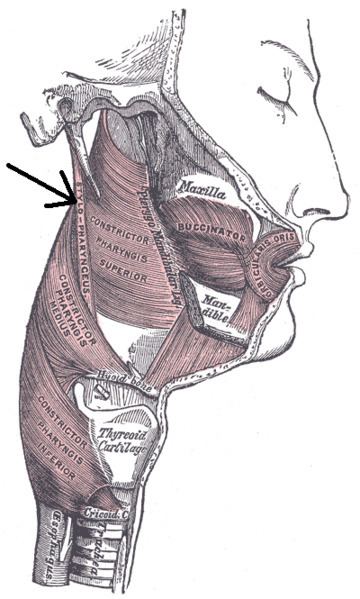Precursor 3rd Pharyngeal arch | ||
 | ||
Origin Styloid process (temporal) Insertion thyroid cartilage (larynx) Nerve glossopharyngeal nerve (CN IX) Actions elevate the larynx, elevate the pharynx, swallowing Latin musculus stylopharyngeus | ||
The stylopharyngeus is a muscle in the head that stretches between the temporal styloid process and the pharynx.
Contents
Structure
The stylopharyngeus is a long, slender muscle, cylindrical above, flattened below. It arises from the medial side of the base of the temporal styloid process, passes downward along the side of the pharynx between the superior pharyngeal constrictor and the middle pharyngeal constrictor, and spreads out beneath the mucous membrane.
Some of its fibers are lost in the constrictor muscles while others, joining the palatopharyngeus muscle, are inserted into the posterior border of the thyroid cartilage.
The glossopharyngeal nerve runs on the lateral side of this muscle, and crosses over it to reach the tongue.
Innervation
Stylopharyngeus is the only muscle in the pharynx innervated by the glossopharyngeal nerve (CN IX) and is done by its single motor branch, which supplies special visceral efferent (SVE) fibers to it.
Development
Embryological origin is the third pharyngeal arch
Function
The stylopharyngeus:
